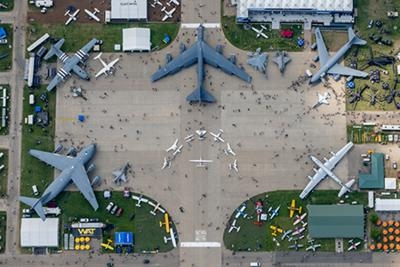Thu, Jul 24, 2025
Veteran Pilot Fred Stadler Shares Essential Tips for the Popular Flight into AirVenture Oshkosh
There are a number of ways attendees annually reach Oshkosh in anticipation of AirVenture.

Yet, the most adventurous mode of transportation is flying your personal aircraft into the event. Fred Stadler is one of many who has commanded the flight to and from Oshkosh, this year will be his 41st flight, accompanied by 50 plus years of flight experience. Stadler is an EAA volunteer and representative to the Federal Aviation Administration for FAA Notice, which outlines AirVenture’s flight procedures. Additionally, he is a cochairman in flight line operations, helping to handle aircraft traffic on the ground with assistance from volunteers. Stadler has hosted various webinars discussing important procedures and safety measures outlined in the NOTAM, elevated by his personal experiences whilst flying.
The fundamental procedures have remained the same with the occasional addition and/or modification, it is still a visual procedure according to Stadler. Regardless, the adventure is still one of risk without the proper skill sets. “There’s some very highly skilled pilots who may not be really ready to fly into Oshkosh,” said Stadler. The importance is evaluating a pilot’s skill set, brushing up on their VFR skills, and not only knowing the NOTAM and arrival procedures but really understanding them. Printing pages 10 to 17 of the NOTAM is a strong suggestion. It is always crucial for a pilot to understand the correct foot ceiling to safely complete the arrival procedure. Especially considering the weather, “You’re supposed to maintain 500 feet below a cloud, so you really need a minimum of 1,500 foot ceiling to safely do the arrival procedure. You know, all the normal concerns about the weather still apply,” said Stadler.

Once in the sky, some companionship, copilot or not, can be extremely helpful to keep an eye on the airspace. A pilot’s eyes should always be outside the cockpit while monitoring their F approach control frequency, especially in such a busy airspace, Stadler added. It’s also extremely important to allocate enough fuel and time to get to your destination, “Timing is all dependent on the individual decisions of thousands of other pilots,” said Stadler. The best time to aim for is in the morning between 7:00 am and 9:00 am. When on the ground it’s important to follow the set arrival procedures and have a legible three letter code outlining where you would like to position your aircraft. Collaborating with the assigned tower and ground control is imperative for a safe landing.
At the end of the day, “You're the pilot in command, make sure what you're doing is within your capabilities of your airplane and your own capabilities,” said Stadler.
More News
According To The Witness, Once The Airplane Landed, It Continued To Roll In A Relatively Straight Line Until It Impacted A Tree In His Front Yard On November 4, 2025, about 12:45 e>[...]
"In the frame-by-frame photos from the surveillance video, the left engine can be seen rotating upward from the wing, and as it detaches from the wing, a fire ignites that engulfs >[...]
Radar Required A term displayed on charts and approach plates and included in FDC NOTAMs to alert pilots that segments of either an instrument approach procedure or a route are not>[...]
From 2023 (YouTube Edition): It’s a Small World After All… Founded in 2011 by pilot, aircraft designer and builder, and U.S. Air Force veteran Sam Watrous, Uncasville,>[...]
Also: UFC Buys Tecnams, Emirates B777-9 Buy, Allegiant Pickets, F-22 And MQ-20 The NTSB's preliminary report on the UPS Flight 2976 crash has focused on the left engine pylon's sep>[...]
 NTSB Prelim: Funk B85C
NTSB Prelim: Funk B85C Aero-News: Quote of the Day (11.21.25)
Aero-News: Quote of the Day (11.21.25) ANN's Daily Aero-Term (11.21.25): Radar Required
ANN's Daily Aero-Term (11.21.25): Radar Required Classic Aero-TV: ScaleBirds Seeks P-36 Replica Beta Builders
Classic Aero-TV: ScaleBirds Seeks P-36 Replica Beta Builders Airborne 11.21.25: NTSB on UPS Accident, Shutdown Protections, Enstrom Update
Airborne 11.21.25: NTSB on UPS Accident, Shutdown Protections, Enstrom Update




